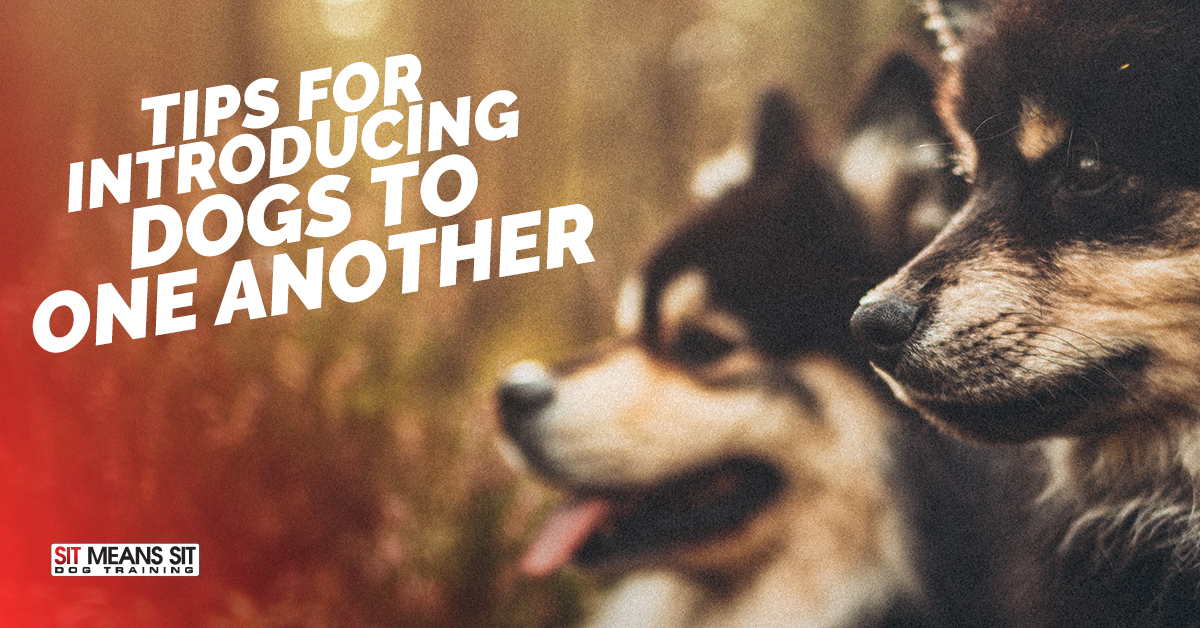
Tips for Introducing Dogs to Each Other
Introducing two dogs for the first time can be a bit nerve-wracking. If not thought out ahead of time, you could risk the chance of the encounter going poorly and ruining any hope for a good relationship between the two pups in the future. First impressions matter, especially for dogs – so next time you’re planning on having your dog meet another pooch, consider these helpful tips.
Take it Slow & Be Cautious
The worst thing you can do is just throw the two canines into a situation together and hope for the best. Depending on the location and the circumstances, one dog could become territorial or protective, leading to an aggressive encounter. You should never leave two dogs alone together who are just meeting for the first time. If the meeting fails, which is a strong possibility, it could potentially lead to serious injury on both pups’ parts.
Have the Dogs Meet While on Leashes
When introducing your canine companion to a new dog, you should meet up in a neutral area like a training center or a park. This will help lessen the chance of any territorial aggression issues. When the two dogs meet, you must keep them both on their leashes so that you and the other owner are in control of the situation at all times. Then a great idea is to go on a walk together, keeping at least 10 feet between the two dogs so that they can’t greet each other or stare. The point of this is to help acclimate the two furry friends with one another so that the other’s presence doesn’t trigger any feelings of tension.
Next, Meet With the Leashes Dragging
Once again, you’ll want to meet up in a neutral area for both canines. However, be sure the area you choose has plenty of open space. You want to avoid gates, doorways, or anything that could potentially create a confined space. With plenty of room for both dogs to move, there will be a much lower chance of one of the dogs feeling the need to go on the defense.
Once both dogs are in the decided meeting spot, allow them a few minutes to sniff one another. Leave their leashes on in case you have to intervene, but if you feel comfortable, you can let go of it and allow the two dogs to greet with their leashes dragging. After a couple of minutes, call each of your dogs back to their respective owners. Once you allow them to confront each other again, pay attention to their actions. If they seem to be playing with one another or interacting positively, give them a few minutes to continue the favorable moment and then, once again, call them back. Don’t have these meetings last too long, because like mentioned earlier, you want to acclimate the two dogs together slowly. Also, be sure to end each session on a positive note if possible.
Have the Dogs Meet at Home
Whichever pet parent’s house you choose to go to, be sure to take the resident dog out to the yard to meet the other pup before any in-house interactions. Once the two dogs have greeted each other, you can go inside. As always, keep these interactions short and positive. If you start to notice any signs of tension, immediately separate the two canines and try again later.
Don’t Leave the Two Dogs Alone
Especially while they’re still in the introduction phase and getting to know one another, you should never leave the two dogs alone. If you do have to leave the room, either crate the pups or put them in separate rooms. This is in hopes of preventing any chance of fighting between the two dogs.
Actively Work to Avoid Conflict
Sometimes you may witness minor disputes between the two canines that end as quickly as they started. For example, one dog might growl at the other over a toy or their food bowl. These are typically just warnings and help set boundaries for one another. But there shouldn’t be any sign that one dog is dominant while the other is submissive. The two canines’ roles should change depending on the context of the situation. You want to be paying attention to the two dogs’ dynamics and ensuring one isn’t bullying the other.
Introducing dogs for the first time can be a tricky situation. But if you plan out their initial interactions carefully, there should be a good chance the two pups will end up getting along.
